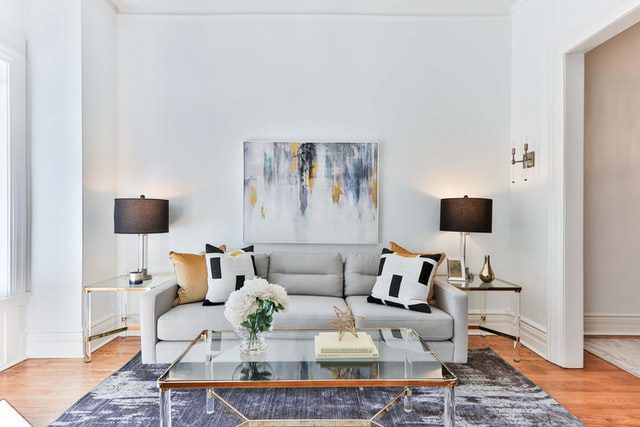Embarking on an interior design journey as a beginner can be both exciting and overwhelming· Whether you are moving into a new home or simply looking to refresh your current space, understanding the basics of interior design is essential· By following a few key tips, you can transform your space into a stylish and functional haven that reflects your personal style· In this article, we will explore the best interior design tips for beginners, covering everything from understanding your personal style to maximizing storage and creating the perfect ambiance·
Understanding Your Personal Style: Discovering What Appeals to You
Before diving into the world of interior design, it is crucial to understand your personal style· Take the time to explore different design styles and aesthetics to discover what appeals to you the most· Whether you prefer a minimalist, modern, traditional, or eclectic style, understanding your preferences will help guide your design decisions·
One way to discover your personal style is by creating a mood board· Collect images, colors, and textures that resonate with you and create a visual representation of your desired aesthetic· This will serve as a reference point throughout your design process and help you stay focused on your vision·
Planning Your Space: Assessing the Layout and Functionality
Once you have a clear understanding of your personal style, it is time to assess the layout and functionality of your space· Consider the purpose of each room and how you envision yourself using it· For example, if you are designing a living room, think about whether you want it to be a cozy space for relaxation or a more formal area for entertaining guests·
Take measurements of your space and create a floor plan to visualize the layout· This will help you determine the placement of furniture and other elements· Consider traffic flow and ensure that there is enough space to move around comfortably· Don’t be afraid to experiment with different layouts until you find the one that works best for you·
Color Palette and Mood: Choosing the Right Colors for Each Room
Color plays a crucial role in interior design as it sets the mood and atmosphere of a room· When choosing a color palette, consider the function of the room and the emotions you want to evoke· For example, warm colors like red and orange can create a cozy and inviting atmosphere in a living room, while cool colors like blue and green can promote relaxation in a bedroom·
It is also important to consider the natural light in your space when selecting colors· Rooms with ample natural light can handle bolder and darker colors, while rooms with limited natural light may benefit from lighter and brighter hues· Experiment with different color combinations and don’t be afraid to add pops of color through accessories and artwork·
Furniture and Accessories: Selecting Pieces that Complement Your Style
Choosing the right furniture and accessories is essential to create a cohesive and stylish interior design· When selecting furniture, consider both form and function· Invest in pieces that are not only aesthetically pleasing but also comfortable and durable· Look for furniture that complements your personal style and fits well within the overall design of the room·
Accessories play a crucial role in adding personality and character to a space· Consider incorporating elements like artwork, rugs, throw pillows, and plants to enhance the visual appeal of your room· Mix and match different textures and patterns to create visual interest and add depth to your design·
Lighting and Ambiance: Creating the Perfect Atmosphere
Lighting is a key element in interior design that can greatly impact the ambiance of a room· Natural light is always the best option, so make sure to maximize the amount of natural light entering your space by keeping windows unobstructed· If natural light is limited, consider incorporating a combination of ambient, task, and accent lighting to create a layered and inviting atmosphere·
Ambient lighting provides overall illumination, while task lighting is focused on specific areas for activities like reading or cooking· Accent lighting is used to highlight architectural features or artwork· By incorporating different types of lighting, you can create a versatile and functional space that can be easily adapted to different moods and activities·
Maximizing Storage: Organizing and Utilizing Space Effectively
Effective storage solutions are essential for maintaining a clutter-free and organized space· Before purchasing storage furniture, assess your needs and identify areas where you can maximize storage potential· Utilize vertical space by installing shelves or wall-mounted cabinets· Invest in multi-functional furniture pieces like ottomans with hidden storage or coffee tables with built-in drawers·
Additionally, decluttering regularly is crucial to maintain an organized space· Get rid of items that you no longer need or use and find creative ways to store the essentials· By maximizing storage and keeping your space organized, you can create a visually appealing and functional environment·
Budget-Friendly Tips: Achieving a Stunning Design without Breaking the Bank
Designing a stunning interior doesn’t have to break the bank· There are plenty of budget-friendly tips and tricks that can help you achieve a stylish design without overspending· One cost-effective option is to repurpose or upcycle furniture and accessories· Give old pieces a fresh coat of paint or reupholster them to match your desired aesthetic·
Shopping at thrift stores, flea markets, or online marketplaces can also be a great way to find unique and affordable pieces· Look for sales and discounts at home decor stores or consider DIY projects to create personalized and budget-friendly decor·
Conclusion
Embarking on an interior design journey as a beginner can be a rewarding experience· By understanding your personal style, planning your space effectively, choosing the right colors and furniture, creating the perfect ambiance, maximizing storage, and being mindful of your budget, you can create a stunning and functional design that reflects your unique personality and style· Remember, interior design is a continuous process, so don’t be afraid to experiment and evolve your design over time· Happy designing!










